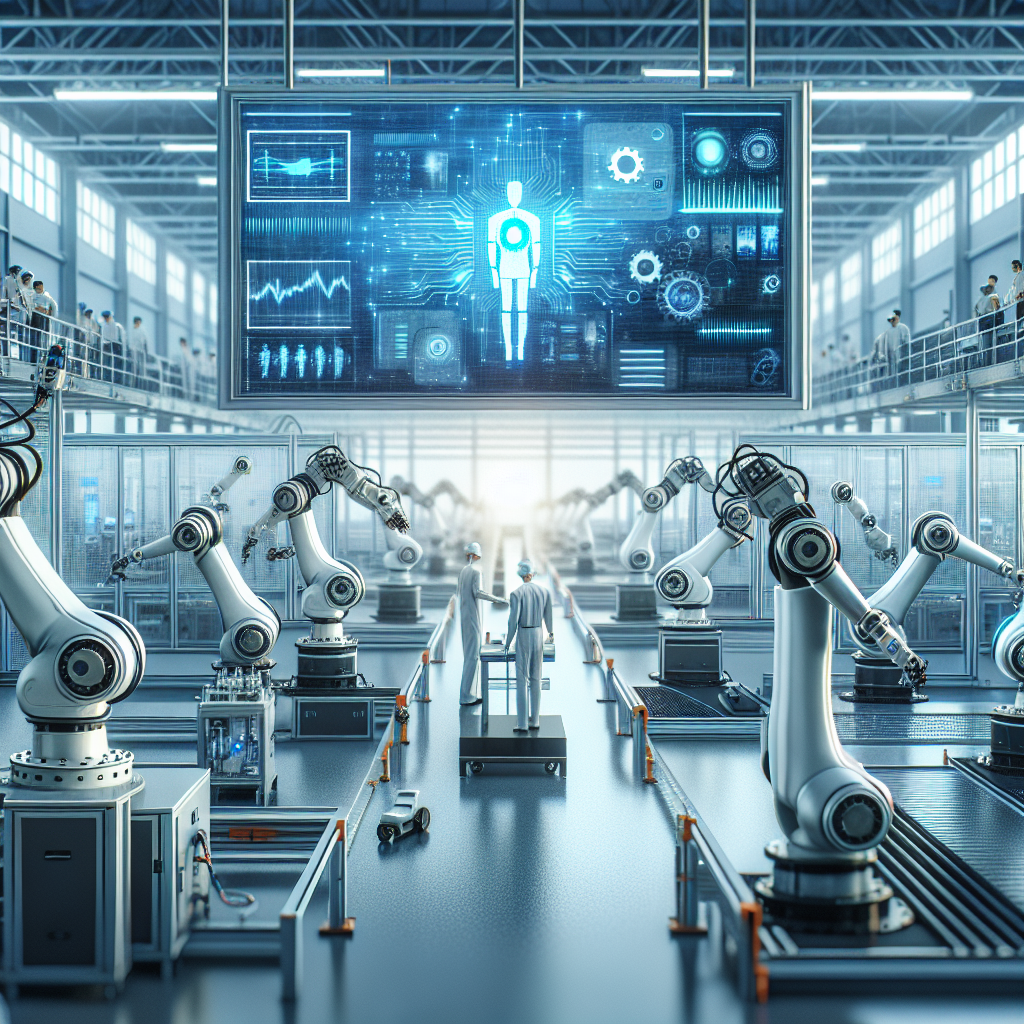Conversational AI, also known as chatbots or virtual assistants, has been revolutionizing various industries by streamlining processes, enhancing customer service, and improving overall efficiency. In the manufacturing sector, Conversational AI is helping companies improve production efficiency and quality control, ultimately leading to increased productivity and profitability.
What is Conversational AI in Manufacturing?
Conversational AI in manufacturing refers to the use of artificial intelligence-powered chatbots or virtual assistants to facilitate communication and streamline processes within manufacturing plants. These AI systems are designed to interact with employees, customers, and machines in a natural language format, making it easier to gather information, troubleshoot issues, and make data-driven decisions.
How is Conversational AI Improving Production Efficiency in Manufacturing?
1. Real-time Monitoring and Alerts: Conversational AI systems are capable of monitoring production processes in real-time, identifying potential issues or bottlenecks, and sending alerts to relevant personnel. This proactive approach helps manufacturing plants address issues before they escalate, minimizing downtime and maximizing productivity.
2. Predictive Maintenance: By analyzing historical data and machine performance, Conversational AI can predict when equipment is likely to fail or require maintenance. This enables manufacturing plants to schedule maintenance activities in advance, reducing unplanned downtime and extending the lifespan of machinery.
3. Inventory Management: Conversational AI can track inventory levels, place orders for materials, and provide updates on delivery status. This helps manufacturing plants optimize their supply chain, reduce stockouts, and ensure timely production schedules.
4. Process Automation: Conversational AI can automate routine tasks such as data entry, scheduling, and reporting, freeing up employees to focus on more strategic activities. This automation leads to increased efficiency, reduced errors, and improved overall performance.
5. Employee Training and Support: Conversational AI can provide on-demand training and support to employees, guiding them through complex processes, troubleshooting issues, and answering questions in real-time. This improves worker productivity, reduces training costs, and ensures consistent quality control.
How is Conversational AI Enhancing Quality Control in Manufacturing?
1. Defect Detection: Conversational AI can analyze images, videos, and sensor data to detect defects in products during the manufacturing process. By identifying quality issues early on, manufacturing plants can take corrective actions and prevent defective products from reaching customers.
2. Root Cause Analysis: Conversational AI can conduct root cause analysis to determine the underlying reasons for quality issues, such as machine malfunctions, human errors, or process deviations. This insight enables manufacturing plants to implement targeted solutions and prevent similar issues from occurring in the future.
3. Quality Assurance Audits: Conversational AI can assist with quality assurance audits by providing real-time access to regulatory requirements, compliance standards, and best practices. This ensures that manufacturing plants meet quality standards, avoid costly fines, and maintain a positive reputation in the market.
4. Customer Feedback Analysis: Conversational AI can analyze customer feedback, reviews, and complaints to identify trends, patterns, and areas for improvement. This data-driven approach helps manufacturing plants enhance product quality, address customer concerns, and build long-lasting relationships with their target audience.
5. Continuous Improvement: Conversational AI can facilitate continuous improvement initiatives by collecting feedback from employees, suppliers, and customers, analyzing performance metrics, and recommending areas for enhancement. This iterative process ensures that manufacturing plants remain competitive, agile, and responsive to market demands.
FAQs about Conversational AI in Manufacturing:
Q: How can Conversational AI improve communication within manufacturing plants?
A: Conversational AI can facilitate seamless communication between employees, departments, and machines by providing real-time updates, alerts, and notifications in a natural language format.
Q: Is Conversational AI secure for use in manufacturing plants?
A: Yes, Conversational AI systems are designed with robust security features to protect sensitive data, prevent unauthorized access, and comply with industry regulations.
Q: Can Conversational AI integrate with existing manufacturing systems and software?
A: Yes, Conversational AI can integrate with ERP systems, MES platforms, and other manufacturing software to streamline processes, share data, and automate tasks.
Q: How can manufacturing plants measure the ROI of Conversational AI implementation?
A: Manufacturing plants can measure the ROI of Conversational AI by tracking key performance indicators such as production efficiency, quality control metrics, cost savings, and customer satisfaction levels.
Q: What are the potential challenges of implementing Conversational AI in manufacturing?
A: Some potential challenges of implementing Conversational AI in manufacturing include data privacy concerns, employee resistance to change, integration complexities, and the need for ongoing maintenance and updates.
In conclusion, Conversational AI is transforming the manufacturing industry by improving production efficiency, enhancing quality control, and driving continuous improvement initiatives. By leveraging AI-powered chatbots and virtual assistants, manufacturing plants can optimize processes, reduce costs, and deliver exceptional products to customers. As technology continues to evolve, Conversational AI will play an increasingly important role in shaping the future of manufacturing and driving innovation in the industry.

